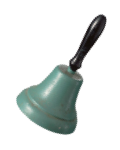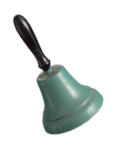Ryan Chua Kia Kit, discipline head at Singapore Rollersports Federation, states, “In-line speed-skating has come a long way in the past few years. In national trainings, it is common to have Singaporeans skating by to question about the sport and how they may participate in it, either competitively or leisurely. As we skate laps around the 100PLUS track, we are often accompanied by other groups of skaters.” In a confined world where we no longer have access to travel and vacations abroad, the avenue of inline skating has become even more attractive to Singaporeans to curb the COVID boredom.
To see the sport existing beyond just the competitive scene is a sight that is often known, but rarely experienced. Inline speed-skating has undoubtedly, in its birth as a “COVID sport”, restated the importance of sporting for everyday Singaporeans. This is particularly true as the pandemic has allowed many Singaporeans to return to sporting to pass and kill time in confined spaces. Sporting is not a domain or world reserved exclusively for the enjoyment of elite athletes. It is also a form of leisure, and more importantly, a space for communal bonding between family and friends. Perhaps, even the development of elite athletes who take their passion for the sport to a competitive extent – such as myself – stem precisely from the fact that sporting has been such a core part of our identities as Singaporeans to begin with. That our country can produce high-calibre athletes that compete on the world stage, even with a drastically smaller population size and talent pool, speaks to how there is great fortitude and spirit when it comes to Singaporeans’ views of sporting.
Even across disciplines, we feel that same passion for sporting precisely because at some point, Singaporeans have participated in sports in some way or another. Even during primary and secondary school education, Singaporeans encounter sports during their Physical Education (PE) lessons or extracurricular activities. Schools host multiple sports, from captain ball to handball, and even inline skating workshops. Sporting has inevitably been a core part of our “growing-up” in Singapore, and our participation in it mutually bonds us as Singaporeans.. Nationalistic and patriotic ideals are emulated at broadcasted events, or even in the leisurely skates we take around Singapore. Sporting, in both the physical spaces and mental values that embody it, serves as a vital part of our national heritage that we have seen and must continue to preserve in our Singapore.
As an athlete and student-historian, the importance of sporting and the space for it is an important topic. It provides a greater sense of duty for me as an athlete to protect and promote this space through my achievements and establishes the reason for Singaporeans’ almost-innate joy when it comes to the celebration of sporting in Singapore. After all, sporting is part of the everyday, be it in our celebration of the glory of athletes, or our own participation in sports such as inline-skating for recreation and bonding. Be it inline skaters that line the 100PLUS stadium at the National Stadium on a Sunday morning, or the families that leisurely skate around East Coast Park, inline skating has and continues to undoubtedly occupy an important part of these Singaporeans’ lives. The history of speed skating and its gaining traction within the past decade thus unveils the deeper heritage of sporting that Singaporeans hold within our hearts.
About author
Ping Siang is currently a third-year undergraduate at Nanyang Technological University (NTU) and Team Singapore athlete for the sport of inline speed-skating. While he is not racing on the track, he occupies himself with analysing science fiction in history. This essay is a short piece discussing his experience with speed-skating in Singapore, and how the development of the sport in recent years reflect a deeper understanding of the place sporting holds in Singapore’s heritage. Ping Siang draws upon the shared experiences of celebrating sports across the lives of Singaporeans, and how speed skating has been a way for Singaporeans to actively engage within the act of sporting itself as a communal activity, revealing the importance sporting holds over the lives of Singaporeans.


